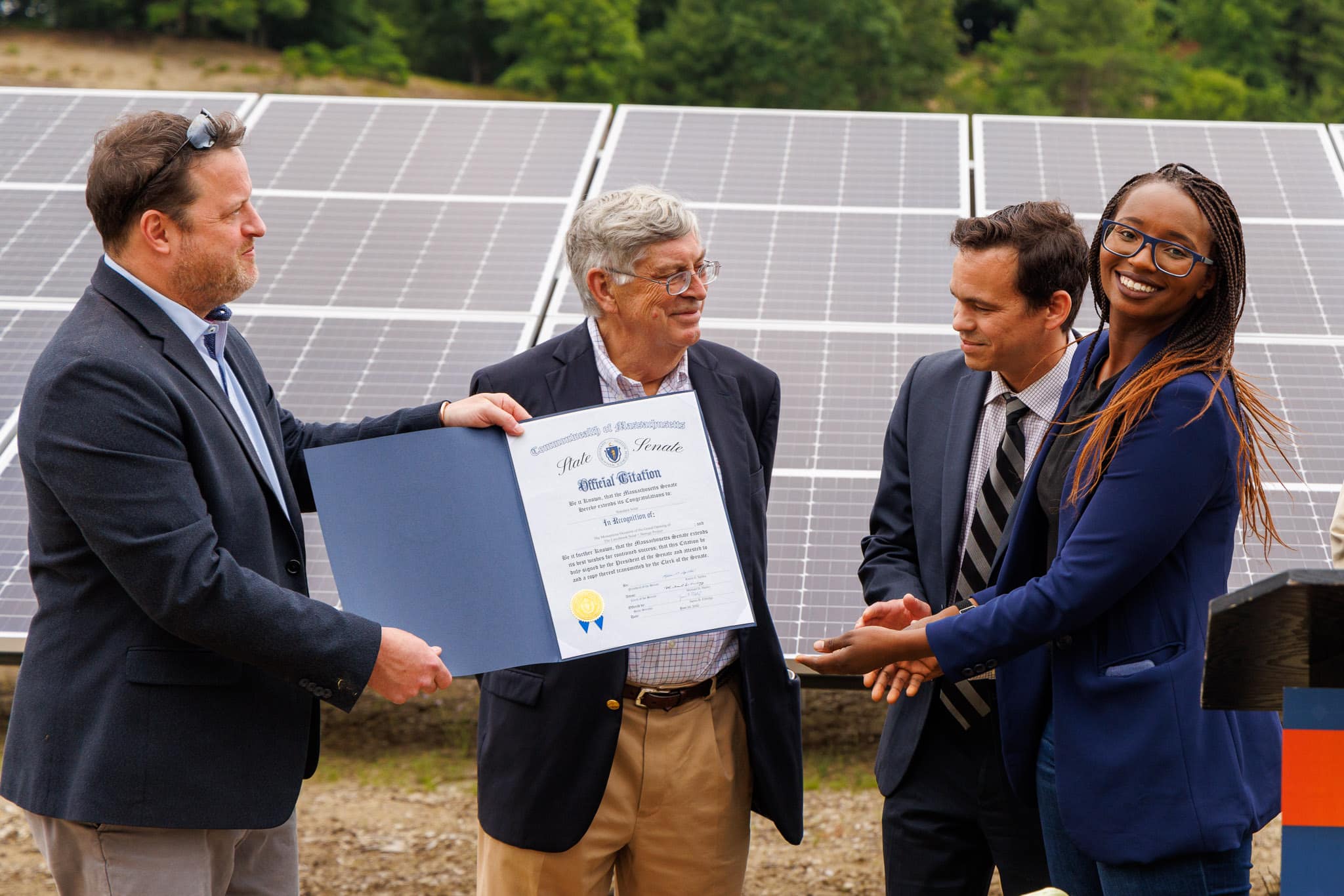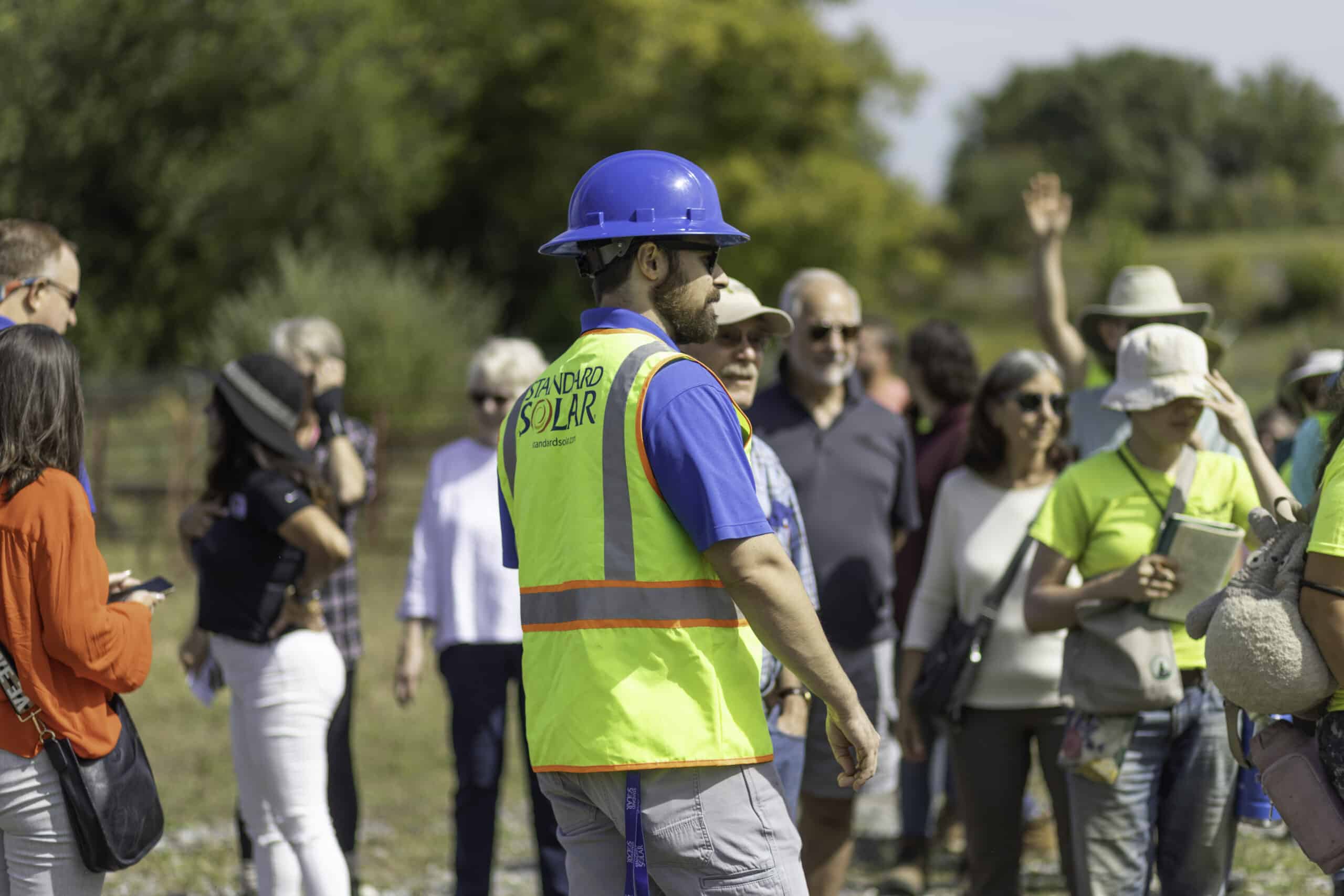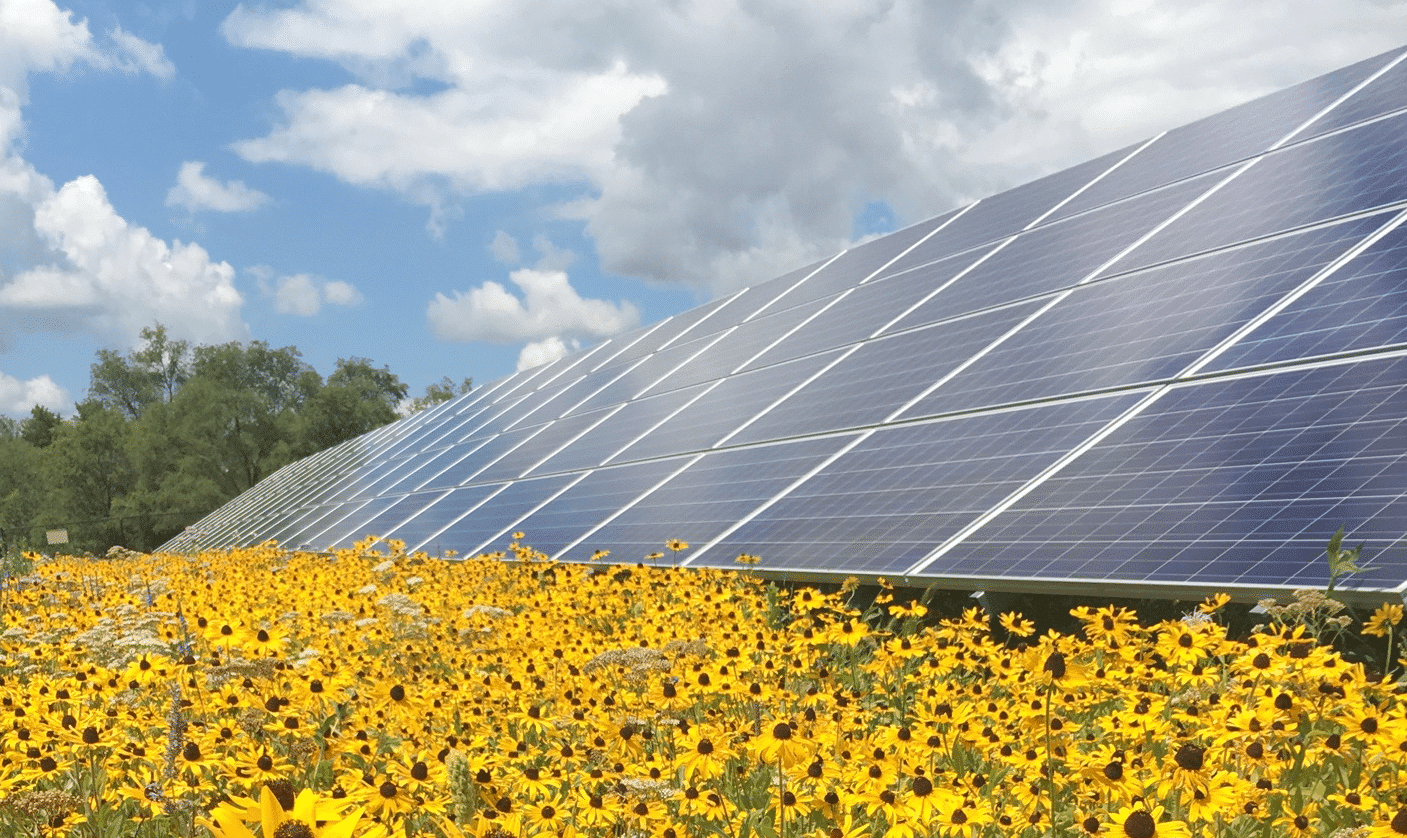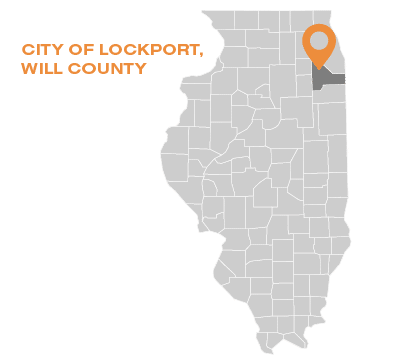AC IL Lockport East and West
Lockport, Will County, Illinois
The Lockport East and West Solar Projects, located in the City of Lockport, Will County, Illinois, will provide the SERC Midwest/Eastern Power Grid with approximately 8.6 megawatts (MWdc) of renewable energy annually. Supporting Illinois’ goal of achieving 40% renewable energy by 2030, this project will strengthen the state’s electricity mix while reducing carbon emissions.
Spanning 37 acres of land in an industrial zone, the project will feature over 14,304 solar modules on three ground mount single-axis tracker systems. It is expected to produce more than 10,000 megawatt hours (MWh) of renewable electricity each year, displacing up to 4,182 metric tons of CO₂ annually. This will significantly reduce reliance on fossil fuels and contribute to a cleaner environment.
From 1911 to 1981, the site was used as an oil refinery. Land remediation, including waste removal and environmental assessments, was completed in 2006. The property has remained vacant and undeveloped since. The Lockport East and West project reflects the county’s effort to put the remediated land to safe and productive use.
As a Community Solar Garden, the project is designed to expand access to solar energy for Illinois residents who may not have the financial means or space to install solar panels on their properties. By participating in community solar, residents can benefit from lower electricity costs while supporting the transition to renewable energy.
Construction is scheduled to commence in January 2026, with operations anticipated to begin by August 2026.
Benefits
Economic Impact
The Lockport East and West Solar Projects will deliver long-term economic benefits to Will County by creating local construction jobs and by providing lower electricity rates for its residents. This project is expected to generate substantial tax revenue, which will be used to fund essential community services and infrastructure. By combining renewable energy development with sustainable land use, the project fosters economic growth and environmental stewardship, ensuring a lasting positive impact on the local community.
Clean Energy Impact
The Lockport East and West Solar Projects will play a vital role in Illinois’ clean energy transition by generating more than 10,000 MWh of carbon-free electricity annually. By providing enough power for more than 1,500 U.S. homes, the project directly contributes to reducing greenhouse gas emissions in a state where electricity accounts for 40% of total emissions. As a pollution-free energy source, solar power supports Illinois’ decarbonization goals while enhancing the resilience and sustainability of the local grid.
Offsets
The Lockport East and West Solar Projects will help reduce carbon emissions by displacing approximately 4,182 tCO2e annually — equivalent to the carbon absorption of over 8,000 acres of U.S. forests. By avoiding fossil fuel combustion, the project contributes to a cleaner Illinois energy grid while supporting regional decarbonization goals. This significant emissions reduction is comparable to removing the environmental impact of burning more than 900,000 gallons of gasoline, reinforcing the project’s role in reducing the energy sector’s carbon emissions.
Location
City of Lockport, Will County, Illinois
Project Size
8.6 MWdc
Timeline to operation
Construction will begin in January 2026, with operations expected to commence in August 2026.
The Lockport East and West Solar Projects are expected to generate more than 10,000 MWh of clean electricity annually — enough to power over 1,500 homes and offset the carbon equivalent of burning 900,000+ gallons of gasoline.
Once home to an oil refinery, the 37-acre site has been remediated and will now host over 14,000 solar panels, transforming a once-polluted property into a clean energy asset that supports Illinois’ renewable energy goals.
Location
Strategically located in Lockport, Will County, Illinois, the Lockport East and West Solar Projects repurpose 37 acres of a former industrial refinery site to generate 8.6 MWdc of clean, carbon-free energy, while enhancing environmental safeguards and promoting local biodiversity. Positioned within the Illinois power grid, the project will bolster regional grid reliability and contribute to the state’s goal of 40% renewable energy by 2030.
Economic Impact
- The project will create construction and related jobs, boosting the local economy during development.
- It is expected to generate long-term tax revenue to fund essential community services and infrastructure in Will County.
- By transforming vacant, remediated land into a revenue-generating solar site, the project puts underused property back into productive economic use.
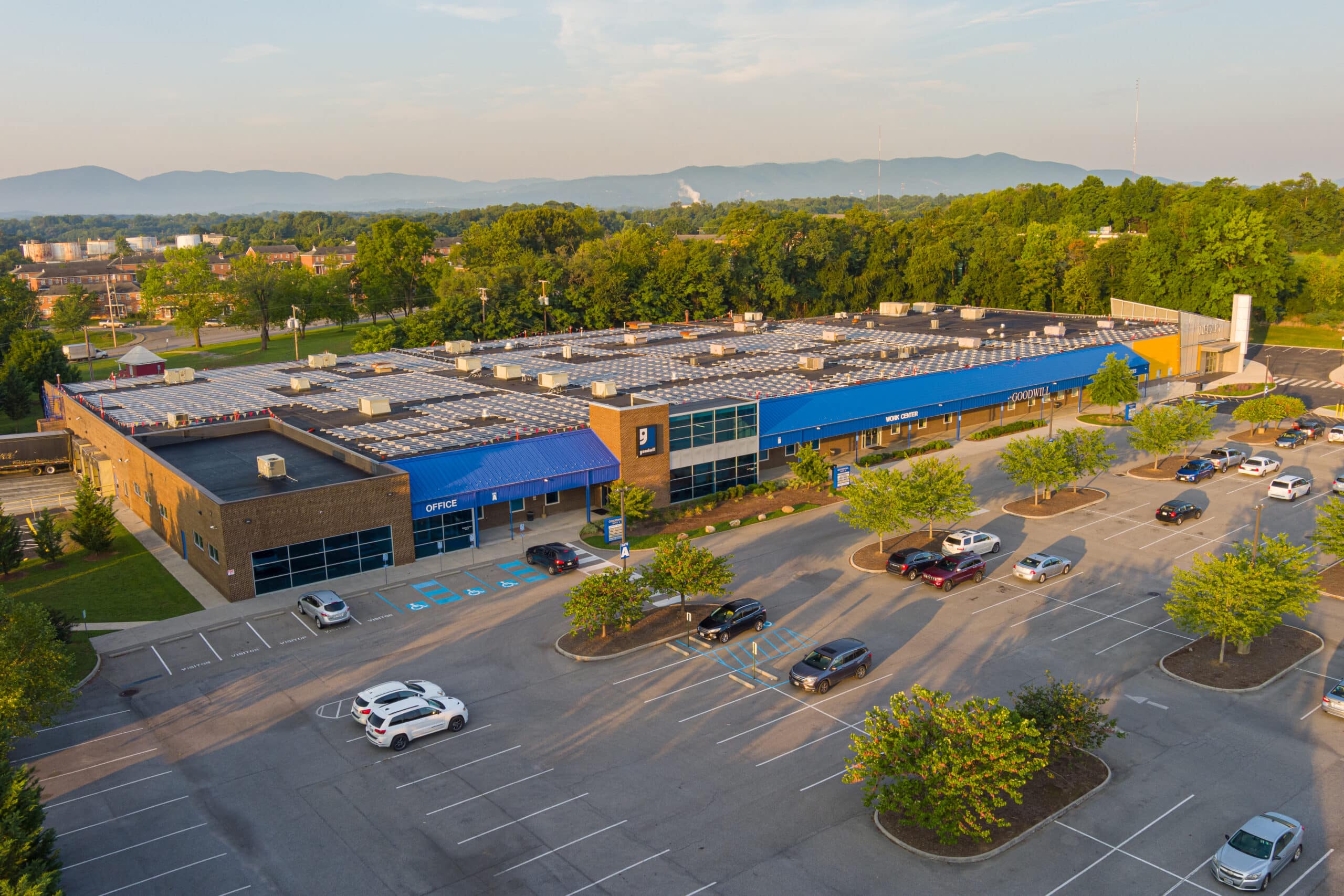
Goodwill Industries, VA, 0.5 MWdc
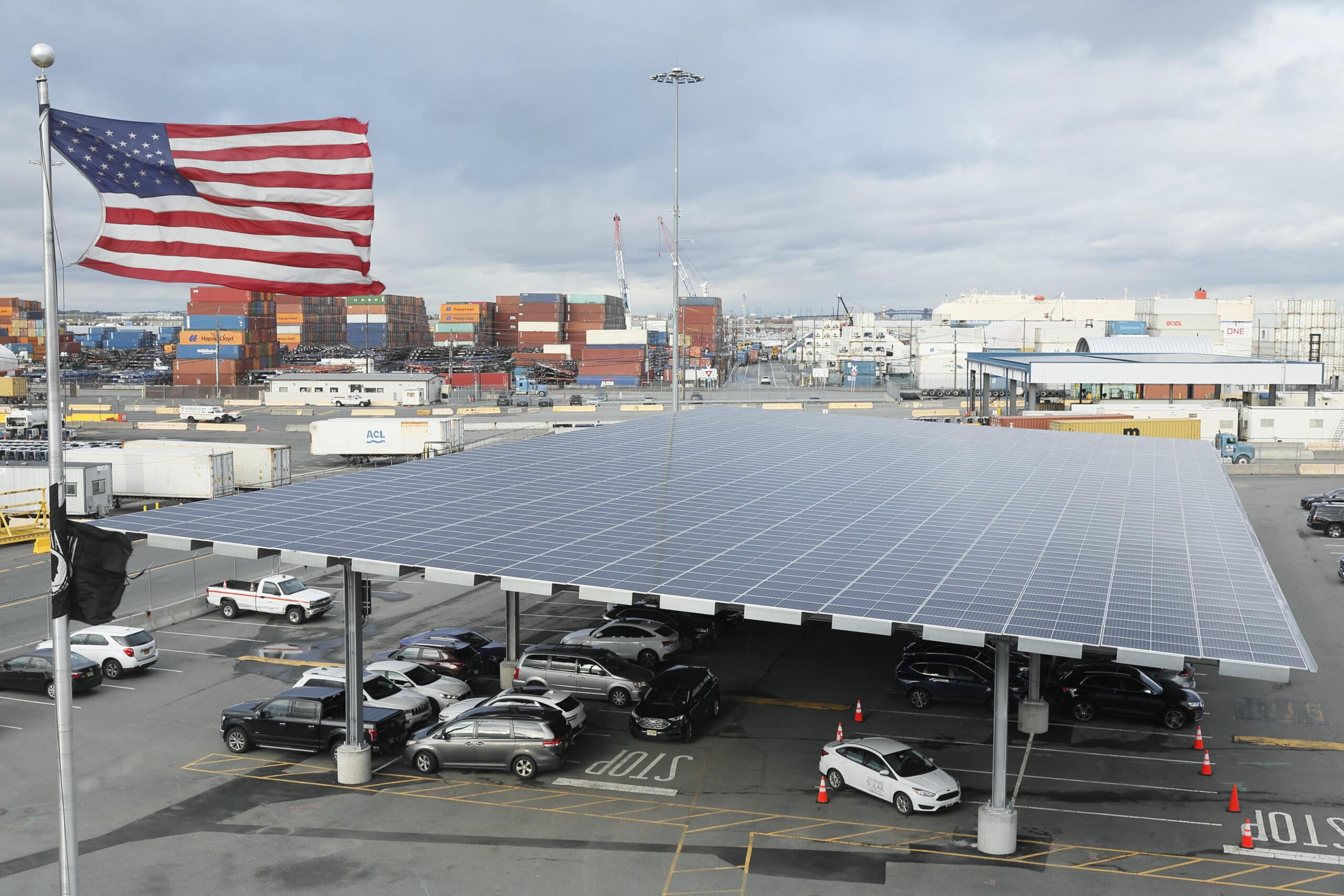
Port Newark Container Terminal, NJ, 3.29 MWdc
Clean Energy Impact
- The project will generate over 10,000 megawatt hours of clean electricity annually — enough to power more than 1,500 homes.
- It will reduce greenhouse gas emissions by approximately 4,182 metric tons of CO₂ each year by displacing fossil fuel-based electricity.
- The project supports Illinois’ goal of achieving 40% renewable energy by 2030, contributing to long-term decarbonization of the state’s power grid.
Environmental Impact
- By avoiding fossil fuel combustion, the project will significantly reduce air pollution and contribute to a cleaner environment.
- The solar installation repurposes 37 acres of previously contaminated industrial land, putting it to safe and productive use.
- The site design includes measures to enhance biodiversity and support local wildlife, including pollinators.
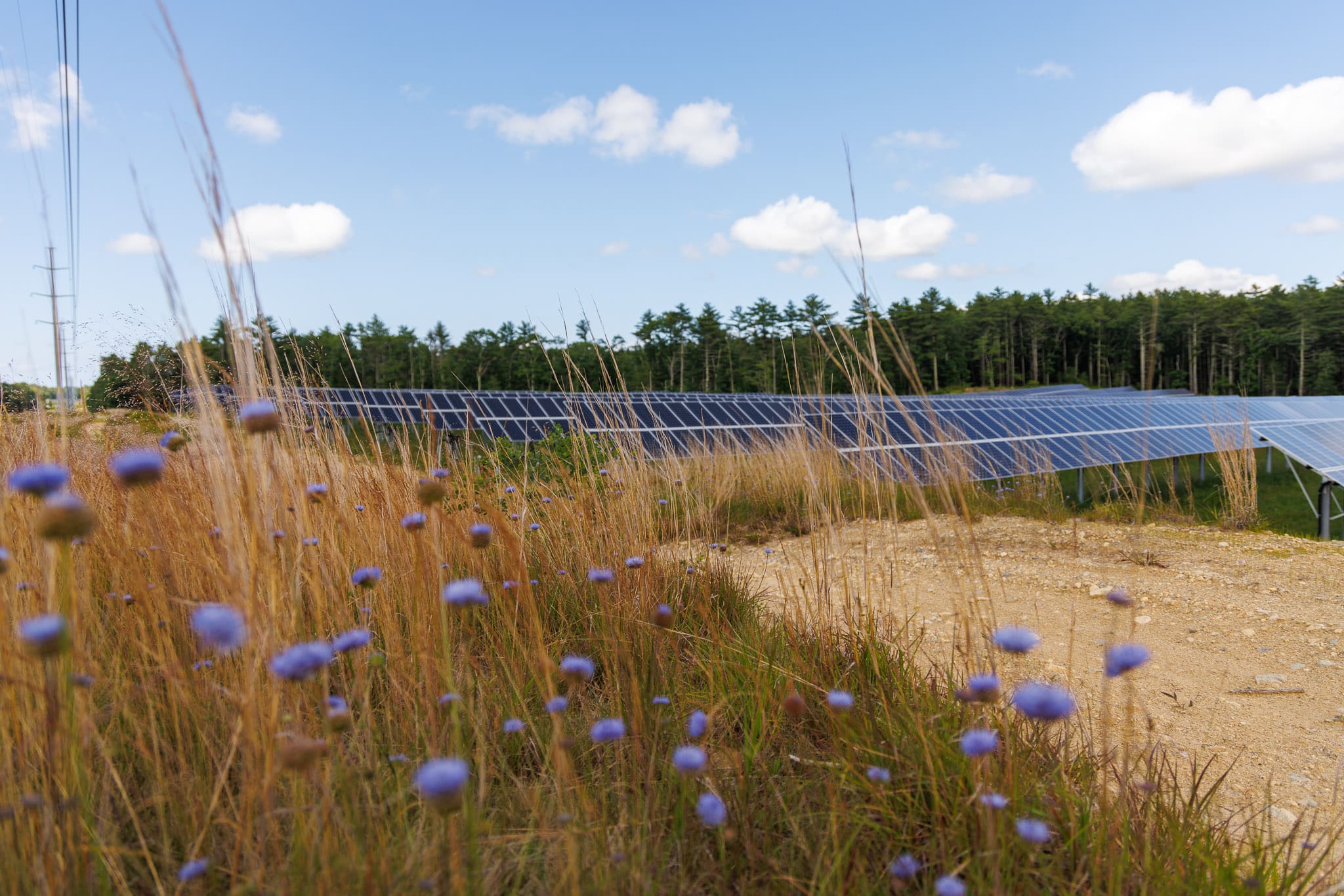
Carver, MA, 2.8 MWdc
Project Location
Where are the Lockport East and West Solar Projects located and are they visible from public roads?
The Lockport East and West Solar projects are in the City of Lockport, Will County, Illinois.
The project is not visible from the residential built environment, as it is located in an industrial zone. The entire property is surrounded by the Des Plaines River (Chicago Sanitary and Ship Canal) to the West, and rows of tree buffers on the eastern and southern boundaries.
Who owns the land on which the Lockport East and West Solar Projects are built?
The Lockport East and West Solar Projects are situated on land owned by the City of Lockport, which Standard Solar leases to operate the system. This land will be leased for 20 years once the project is fully developed, subject to an optional and voluntary three renewal periods of five years each.
Safety & Operations
How do solar panels work?
Solar panels work by converting sunlight into electricity through a process called the photovoltaic effect. Each panel is made up of many solar cells, typically composed of silicon, a material that can absorb sunlight. When sunlight hits these cells, it excites electrons, creating an electric current. This current is collected and directed through wires to power homes, businesses, or the electrical grid. Solar panels are often installed in arrays to capture as much sunlight as possible, and they work best in sunny locations. By harnessing the sun’s energy, solar panels provide a clean, renewable source of electricity without producing harmful emissions.
What happens after the useful life of a solar project?
At Standard Solar, we are committed to sustainability throughout the entire lifecycle of our projects. The Lockport East and West solar project will produce electricity for 20 years. After this time, when the project reaches the end of its operational life, there are well-established processes to ensure responsible repowering or decommissioning and recycling.
Standard Solar has programs and policies to safely remove equipment, restore the land to its original state, and recycle materials like glass, metal, and silicon from solar panels. These programs allow Standard Solar to minimize waste, prevent any burdens on the community, and support the circular economy, ensuring that renewable energy remains a sustainable solution for future generations.
Do solar projects make noise?
Solar projects are designed to operate quietly, making them an ideal option for generating renewable energy without disrupting nearby communities, agriculture or wildlife. The primary components – solar panels – make no noise during operation. Some equipment, like inverters or transformers, may produce a low humming sound when converting solar energy into electricity. The site’s equipment produces up to 80dB when at a 3-ft distance from the site. When standing at the nearest occupied residence, located approx. 650 ft south from the inverters pad, the noise should range between 40-45 dBA, which is well below the average ambient noise of a suburban neighborhood.
This project is in an industrial area where the distance from homes further reduces any potential sound impact.
Since solar arrays only produce electricity when the sun is shining, they are completely silent during the nighttime.
Will the project produce glare?
Solar projects, including this one, are designed to minimize the potential for glare. Solar panels are specifically engineered to absorb sunlight, not reflect it, as their primary function is to convert sunlight into electricity. Modern panels are coated with anti-reflective materials to further reduce reflection. Additionally, projects undergo detailed studies and modeling during the planning phase to ensure they do not create glare that could affect nearby residents, drivers, aviation and wildlife.
Environment & Wildlife
How will the project handle waste? Does the project handle hazardous waste?
The project is expected to generate minimal amounts of waste during construction, such as the packaging in which the solar panels or other equipment are delivered. Our contractors ensure that the site is clean and safe upon completing the building phase. No waste is expected to be generated through the site’s 20-year operational lifetime.
This site will not generate any hazardous waste at any stage of the project.
How will the project manage erosion and stormwater during its lifetime?
This project has been designed with comprehensive measures to manage erosion, stormwater and dust control effectively throughout its lifetime, ensuring minimal impact on the surrounding environment and no disturbances to wetlands or waterways. The project complies with all applicable local, state, and federal permits and certifications.
Before construction, the site underwent a thorough assessment, and best management practices were implemented, including silt fences, sediment basins and buffer zones, to mitigate runoff during the building phase and to ensure that building the arrays will not add any imperviousness to the area.
Once operational, the site will be stabilized with vegetation, including tall fescue grasses, conservation shade mixes (grasses), and butterfly and hummingbird garden mix (native flowers). Regular monitoring and maintenance will ensure that erosion, stormwater and dust control remain effective for the duration of the project.
What is the impact on area wildlife?
Standard Solar carefully considers the impact on wildlife and biodiversity in all projects to minimize disruption to local ecosystems. Detailed environmental studies are conducted to identify sensitive habitats and species, and to mitigate potential adverse impacts.
The Lockport East and West projects repurpose former industrial land to produce clean and safe electricity.
Consultation with the Illinois Department of Natural Resources (IDNR) and the U.S. Fish and Wildlife Service (USFWS)
The Illinois Department of Natural Resources determined that there are no state-listed threatened or endangered species, no record of any Illinois Natural Area Inventory Sites or Natural Preserves, or registered Land and Water Reserves near the project location.
The U.S. Fish and Wildlife Service (USFWS) identified the potential presence of the Indiana Bat at the site; however, the area is barren and lacks suitable habitat. As a result, on-site activities are not expected to have any impact. No trees will be cut down during the construction process.
Environmental Remediation: Creating a Wildlife-Friendly Site
The Lockport East and West Solar Projects are being developed on a remediated former refinery site, now returned to open land. The projects include a range of measures to enhance biodiversity and support a wildlife-friendly habitat for both diurnal and nocturnal pollinators.
Bat boxes will be installed along the perimeter to support local bat populations. The area will be seeded with native plants and grass that provide food and shelter for pollinators, attracting bees, beetles, butterflies and birds, as well as providing stronger nature-based controls to prevent erosion.
Wildlife-friendly fencing and vegetation buffers will be implemented to ensure the safe movement of small animals and birds throughout the site. Additionally, ongoing monitoring will be conducted to minimize environmental impact and ensure compliance with biodiversity and ecosystem protection regulations.
